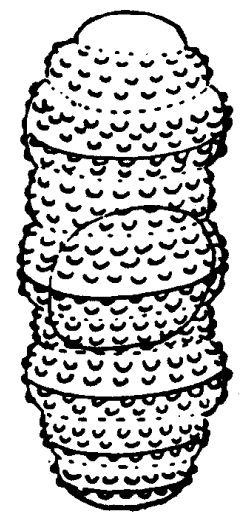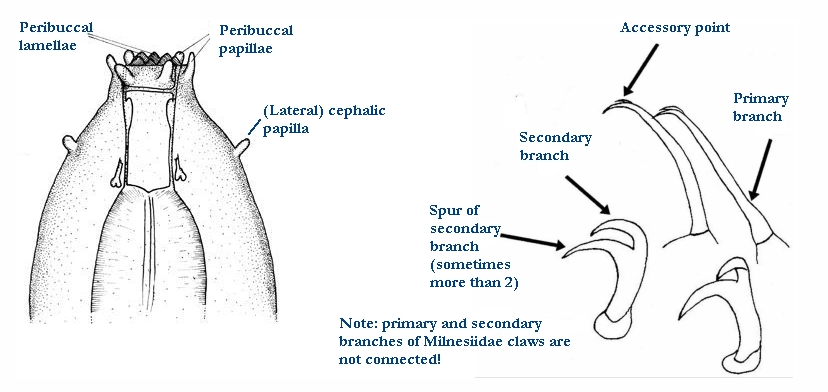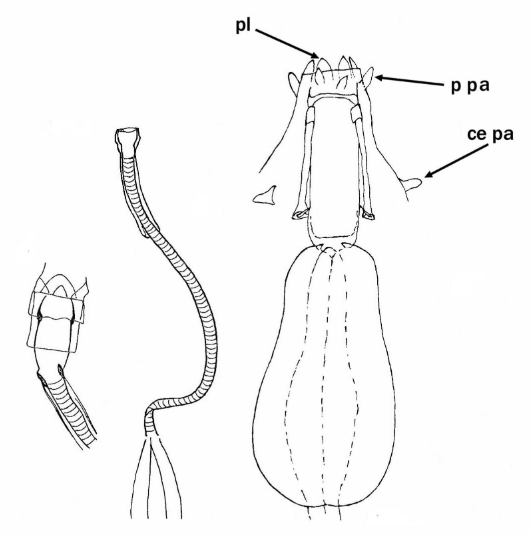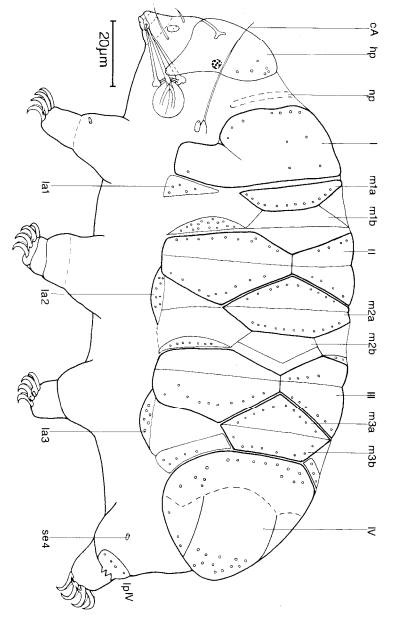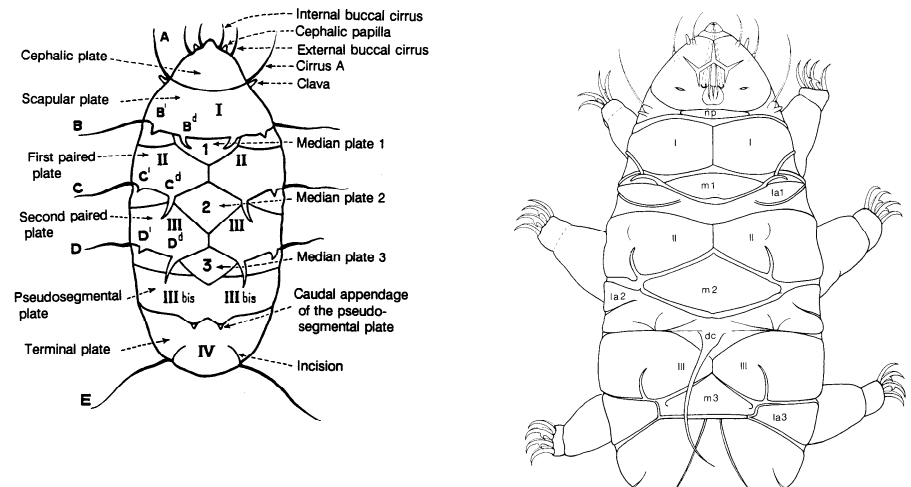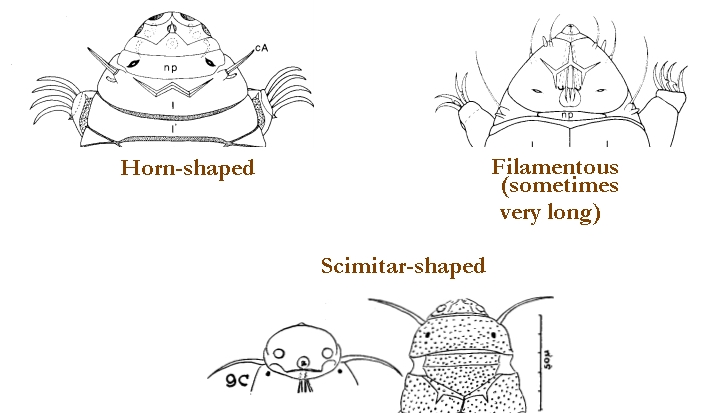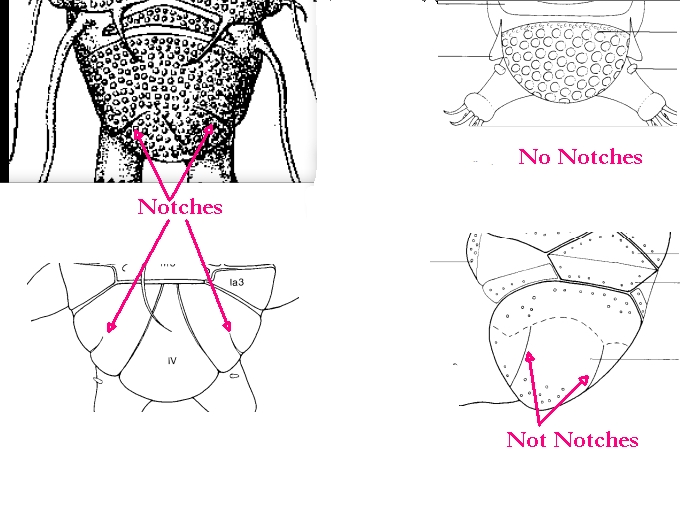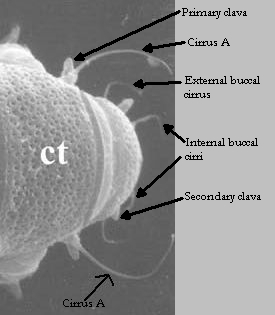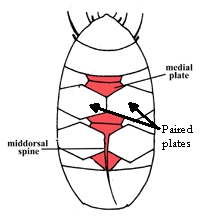Hypsibioidea from Pilato 1969 in Marley et al. 2011: “Parachela; claws asymmetrical (2121); Hypsibius-type claw pairs; AISM hooked (or, if the buccal tube is elongated, AISM can be broad ridges).”
Hypsibioidea from Bertolani et al. 2014: “Double claws asymmetrical with respect to the median plane of the leg (2121), the external (or posterior) claw often with flexible main branch; double claws different in size and shape on the same leg (Hypsibius and Ramazzottius type, or modified), or very reduced in size (Calohypsibius and Microhypsibius type); buccal tube often very narrow”
Hypsibioidea from Gąsiorek et al. 2018: “Eutardigrades with asymmetrical claws (2-1-2-1) and pseudolunulae at claw bases or without any cuticular structures under the basal parts. Hooked or broad-ridged apophyses for the insertion of the stylet muscles. Herbivorous or microbivorous (Guidetti et al. 2012).”
Microhypsibiidae from Pilato 1998: “Eutardigrades having claws arranged asymmetrically with respect to the median plane of the legs. Claws of Microhypsibius type: the claws have a narrow basal portion continuous with the primary branch; the secondary branch is rigidly joined to the primary branch. The internal claws cannot rotate on their bases.”
Hypsibiidae from Bertolani et al. 2014: “Double claws of the Microhypsibius type (small, rigid, with an evident thin basal tract continuous with the primary branch); buccal tube completely rigid; double claws similar in size and shape on the same leg; apophyses for the insertion of the stylet muscles on the buccal tube asymmetrical with respect to the frontal plane. Pharynx with a septulum in some species.”
Genus description from Pilato 1998: “Microhypsibiidae; paired elliptical organ present on the head; buccal tube rigid; ventral lamina absent. Dorsal and ventral apophyses for the insertion of the stylet muscles asymmetrical with respect to the frontal plane; the dorsal apophyses split into two clearly distinct portions: the anterior portion is a stumpy hook with a blunt caudal apex, the caudal portion is a longitudinal thickening. The ventral apophyses is a very slightly prominent ridge with no hook. Both the dorsal and ventral apophyses with two very slender caudal processes pointing posteriorly and laterally. Peribuccal lamellae and peribuccal papulae apparently absent. Posterior to the stylet supports, the lateral walls of the buccal tube have a longitudinal thickening similar to that present in the genus Ramazzottius. Pharyngeal apophyses and placoids are present. The two branches of the furcae of the stylets have thickened, swollen and rounded apices. Lunulae absent in the known species. Smooth eggs laid in the exuviae.”
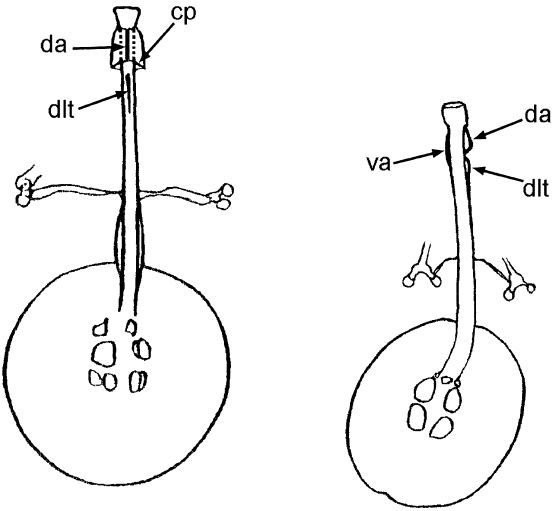

Citations:
Bertolani R, Guidetti R, Marchioro T, Altiero T, Rebecchi L, Cesari M. 2014. Phylogeny of Eutardigrada: New molecular data and their morphological support lead to the identification of new evolutionary lineages. Molecular Phylogenetics and Evolution. 76: 110-126.
Gąsiorek P, Stec D, Morek W, Michalczyk Ł. 2018. An integrative redescription of Hypsibius dujardini (Doyère, 1840), the nominal taxon for Hypsibioidea (Tardigrada: Eutardigrada). Zootaxa. 4415 (1): 45-75.
Marley NJ, McInnes SJ, Sands CJ. 2011. Phylum Tardigrada: A re-evaluation of the Parachela. Zootaxa. 2819: 51-64.
Pilato G. 1969. Schema per una nuova sistemazione delle famiglie e dei generi degli Eutardigrada. Bollettino delle Sedute della Accademia Gioenia di Scienze Naturali in Catania, Series IV. 10 (277): 181-193.
Pilato G. 1998. Microhypsibiidae, new family of eutardigrades, and description of the new genus Fractonotus (Tardigrada). Spixiana. 21 (2): 129-134.
